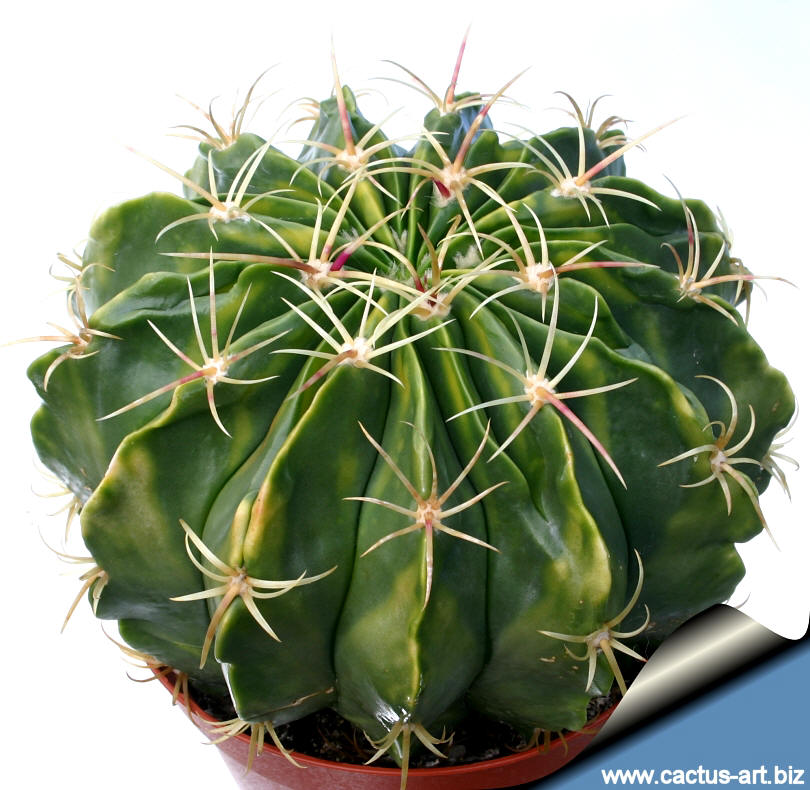|
|
|

Ferocactus macrodiscus
A rare variegated specimen
|
|
|
Description:
A medium-sized barrel cactus with a blue-green epidermis.
Stem: Flat, solitary, 30cm
in diameter (but up to nearly 60 in
some cases)
Ribs: 16 to 21.
Areoles: 5 to 10 mm long, with yellow felt.
Spines: Yellow or red, and curved.
Central spines: 1 to 4, up to 3,5 cm long.
Radial spines: 6 to 8, 2 cm long.
Flowers: Bright purple/pink and white striped, about 4
cm of diameter
Blooming season: From early spring into summer . |
|
Variegated Ferocactus can be found (although not commonly) in
cultivation, and some of these variegated plants have a place in most
collections. All variegates are
mutants. Something has gone wrong with the cellular structure of the
growth tip (apical
meristem) of the plant. As a result of this mutation,
chlorophyll is missing from some or all layers of the plant's
epidermis. The odd variegate appears in many seedling batches in a
small percentage, and is generally separated from normal plants.
Variegated plants grow more slowly, and are generally smaller than
non-variegates of the same species. Coloured areas are also generally
weaker, and more
susceptible to
fungus,
sunburn and other defects. A large well grown variegate Ferocactus
is truly an achievement. These are harder to grow well than they appear.
|
|
Cultivation: Slow-growing to
start, they do well
in cultivation. Suited for any
rich, well drained soil (Ph
6). Grow it in full sun throughout the year.
In winter keep completely dry at 10°C,
but it can tolerate sporadic light frost.
Anyhow it's
problematic if the temperature goes below 5° with high humidity during
the winter rest.
Even adult specimens are affected by wounded spots in
their epidermis.
Less watering than the standard for other ferocacti,
it's necessary to avoid wetting the bodies
of these plants while they are in sunlight. A wet cactus in the sun
light can cause sun burning, which can lead to scars, or even fungal
infections and death.
It is apt to undergo
attacks of red spiders, if it is placed near fruit trees.
Propagation:
Seeds are the only way of
reproducing.
|
|
Advertising
|
|
|
|
|